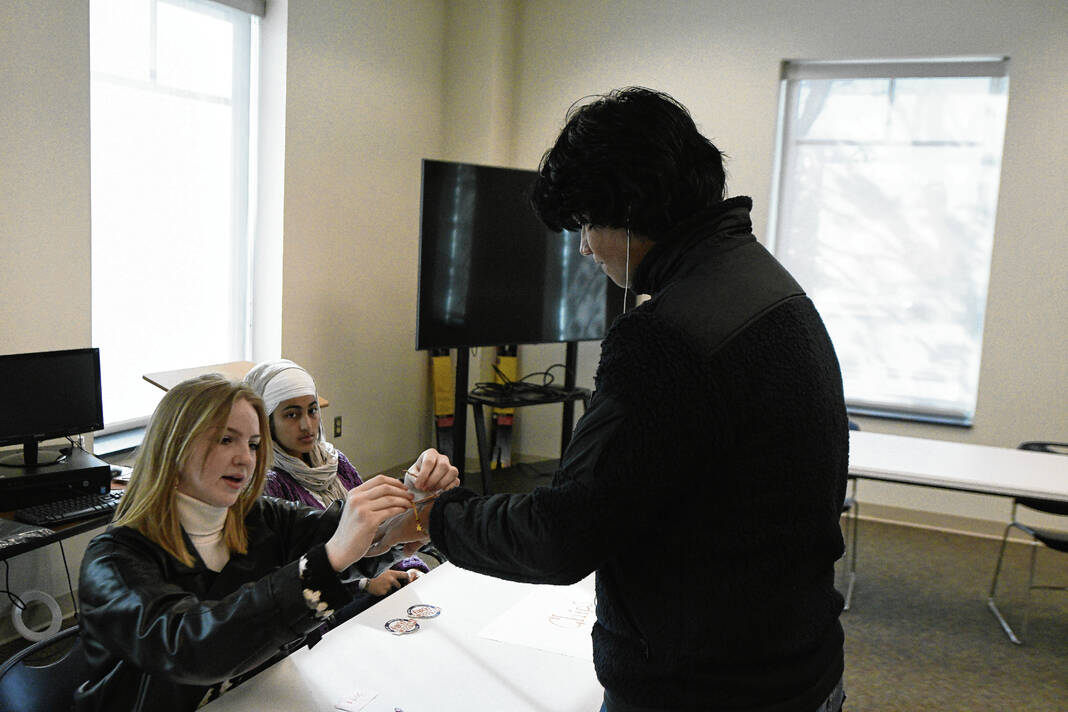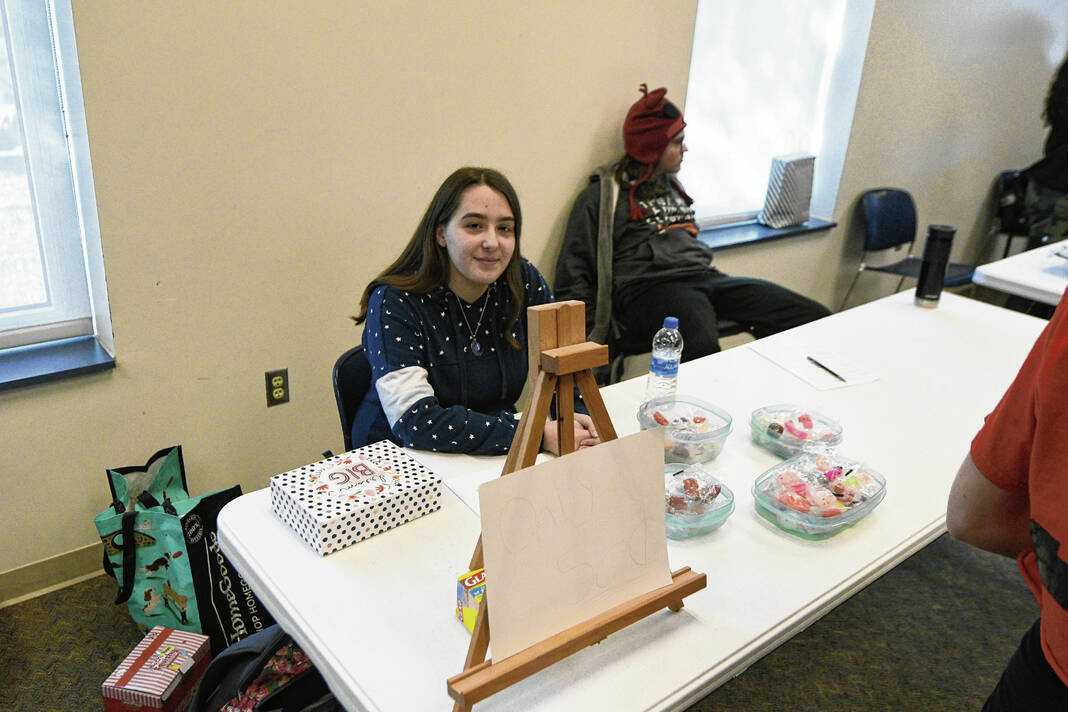
Senior Halle Nett, right, sells a roll to a student Friday as part of her Whiteland Community High School economics class.
ANDY BELL-BALTACI | DAILY JOURNAL
In the large group instruction room at Whiteland Community High School, economics students pitched and sold baked goods, artwork and store-bought items to droves of their peers.
Along with surveying fellow students to see which prices would work best for their items while still allowing for some profit, students in Casey Moeller’s economics class promoted sales in different ways. The class project has become a school tradition, but came with extra challenges in the midst of inflation.
With some students facing economic difficulty, Moeller said she was able to help students work around those challenges, pairing them up with other students or allowing them to bring items from school to sell, such as things they made during ceramics class.
“I think their costs went up as most business costs went up,” she said. “Someone didn’t have a blender and we found a teacher with a blender. They still got to experience things.”
Halle Nett decided to sell rolls donated from Texas Roadhouse, coupled with cinnamon butter and the promise of a raffle ticket for each buyer, the winner getting a $25 gift card to the restaurant. The gift card serves as a way to give back to the restaurant for the donated rolls, Nett said.
The semester-long class, which is required for seniors, helps students gain knowledge of entrepreneurship and money management, she said.
“It teaches you more about the world and what to expect,” Nett said. “I’ve learned a lot about how to run a business and manage your money and time, and different parts of the economy.”
Erin Hollingsworth, paired animated drawings of video game and movie characters with similar stickers to create a bundle for students to save on if they wanted more than just one piece of artwork, she said.
“I’m selling them to get my own art out there,” Hollingsworth said. “I was able to copy and print them out. I started drawing when I was really, really young. I think I started drawing when I could first hold a pencil.”
Other students paired two unrelated items to appeal to a wider range of possible consumers. Such was the case with Darpesh Kaur and Sunny Schulz, with their Chips and Charms table, where Kaur sold bags of chips and Schulz sold her handmade braided charm bracelets.
“I got into this, it was a summer interest and I saw a lot of videos and I said ‘that looks so fun.’ Crochet or embroidery are really fun to do and a really cool hobby,” Schulz said.
With all grade levels coming in to buy the products, some students get ideas of what they want to sell as early as freshman year, Moeller said.
“The biggest thing this provides is a real-world connection,” she said. “Teaching supply and demand can be kind of dry, but if you relate it to something they’re about to experience or did experience, it’s easy to comprehend. They’ve all had these experiences before. It’s competitive for the kids, and it’s a fun experience. It’s not for everyone, and that’s OK, but it provides the opportunity to connect what we’re teaching to the real world for kids.”










